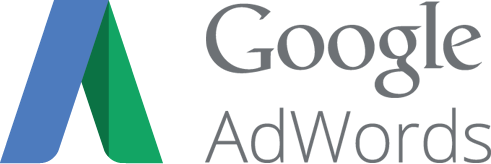Create The Movement Podcast #2 Digital Marketing Efforts
Brad Post: You’re listening to Create The Movement Podcast, My name is Brad Post and we are speaking to online marketing specialist
Josh Rich, Josh how are you doing this morning?
Josh Rich: I’m doing well Brad, How are you?
B: Doing good. We are going to be talking about, we’re going to be having marketing tips Tuesdays. Josh if you could tell us a little bit about what we are going to be talking about on Marketing Tips?
J: So we are just going to do some quick tips on how to improve your marketing efforts specifically focused on your digital marketing efforts. Whether that be SEO, pay per click, social media, content writing, things of that nature are what we are going to be covering in this podcast.
B: Perfect, so mainly online, any online marketing.
J: Yes.
B: What specifically Josh are we going to be talking about today?
J: Today we are going to be talking about back links. We will start out with a general definition of a back link. What a backlink is is a link to your website that is on someone else’s website. That’s a general definition of what a backlink is. And so basically why those are important is that they are really fundamental to the way google started, um, so kinda to give you a history lesson of some of the internet and of backlinks in general, whenever the internet started, there wasn’t search engines it was all web directories so yahoo was probably the most popular search directory um sorry, web directory it was just like a yellow pages online where you just go through and pick a category and scroll through the websites and try to find the ones you are looking for. You really don’t know if the topic you are looking for is on that website. You just know it’s in the general category. So that’s, those are all around back in the early 90’s um, kinda late 80’s and then the first true kind of search engine that was ever somewhat around was web crawler and that was in 1994. That was the first time that any sort of system would actually go through, crawl pages to figure out what the general list of content was.
B: It was called Web Crawler?
J: Web Crawler. It was 1994 and so that, it never really got super popular, it just wasn’t super user friendly, um so alta vista was kinda like the place to be that was the uh, 1995 and that was pretty popular and then..
B: Vista?
J: Yeah, Ulta Vista.
B: Ulta Vista, OK
J: Then google came out in 1998 and they definitely changed the game, um and so whenever that happened, that’s when search engines slowly started to take over web directories and so a fun fact is that whenever yahoo finally made the switch from being a directory to a search engine they actually used google’s index, so it was literally just using google’s search results on a yahoo page. That was the only difference back when that happened, And so, getting back to back links and why they are so important. Whenever Sergey Brin and Lawrence Page founded Google in 1998 they were both at Stanford pursuing their PhD’s in computer science and so they wrote this paper and it’s called the anatomy of the large scale hyper link architectural web search engine. It’s a mouthful, if you google it you can still find it and read it. I didn’t read it all but you can skim through it and kind of see how google was originally intended to function. And so, basically before that they had this idea and it was actually called backrub. And so the idea about back rubbing, google and that really long paper name was that the best way to evaluate a website’s worth, the website’s credibility was to figure out how many other websites were pulling to that. Ok. This wasn’t a novel idea, this has been used in research methods for a long time, it’s called citation count, so you just in general research papers in general…if one paper has a whole bunch of other papers that are citing it people are going to say that’s going to be very valuable, very credible so there is a ply in this theory to web searches, was the general idea. And that’s, they were kind of the first ones to do that. Again, that’s why backlinks are so important, at the very core of what google is and how it was founded. Uh, so they did that first, and there is another one called page decks…oh, sorry Rank decks and that happened in 1996. They did a similar thing. The guy that built that ended up going to build the Chinese version of google. It’s the fifth most used search engine now. The same thing now, whatever search engine it is back links are important. Ok. That’s kind of the point. So that’s kind of the general history of back links and again why they matter today in search engine optimization. So moving on I kind of wanted to give just a general overview of what a perfect back link is, because there are tons of ways to get them, there are tons of ways to do them, but we kind of want to take a look at the ideal situation. And just as a disclaimer, again this is an ideal situation, if someone wants to put your link on their website, but it doesn’t fit these parameters you should still do it. Don’t turn it down just because it doesn’t fit this ideal set of perameters. Any link, well I don’t want to say any link, but most of the time a link is a good thing.
B: As long as it’s a google authority page?
J: Yes, exactly. So the first thing you want to look for in an ideal back link is that you want it to be a text link not an image link. So you can do an image link, you click on the image and then it will go to your website, but ideally you want it to be a text link because you can throw in what’s called an anchor text and we can go, we will hit on that here in a bit of what that is. Just know that text are better than images but again if someone wants to put an image on it don’t turn it down. The next one is called, what’s called a tittle tag for your text and those don’t necessarily help with optimization but it’s something you want to put in there and what that is like, if you have that in there if you have that text or the hyper link on that image and you hover your mouse over it, it will pop up to see what it is. So that just helps more with your click through rate as opposed to an optimization rate, but people will know, “oh, this is where this going to take me if I click there”. So you want to make sure that’s on there. The next one is what an Anchor text is. So, anchor text is like the key words, the actual words the hyper links actually attach to. And so ideally you want that to be your key word. So we are going to set this up, say someone had a website and they wanted to put a link to your website talking about Marketing tips Tuesday or like SEO Podcast. We would want them to put the hyperlink on SEO Pod Cast as opposed to Create The Movement because we are already going to rank well for Create The Movement because we have the domain. But, we don’t necessarily own the domain of SEO Podcast and so that way whenever google indexes that site we will see that oh, SEO Podcast is what this site is about. So it helps your search results for that. The next part…the next two things are going to sound a little nerdy, ha ha ha. So sound the nerd alert. But, basically you, whenever you look on the back end of a back link you will see what is called a rehl equals tag and so that’s a couple, basically what I mean is that is what that’s relevant to. This is where, if you are familiar with what’s called a nofollow, that’s where that’s tagged. And so nofollow is like a social media site or basically it doesn’t really count. Well it counts, but it doesn’t really count. So, like I said social media is a big one that is kind of historically been a no follow, but some of that might be changing soon. We know now that some of your tweets are showing up in google searches. Some people are starting to whisper that someday social media actually might count for something like a back link. But currently they aren’t so you want to make sure that it is not a nofollow. That it’s like a glossary or an index, something like that. There are a ton of different ones that you can use. Just make sure that it is not a nofollow. The second one is your target tag. So a target tag, basically it will dictate how that link is opened. And so, this doesn’t necessarily matter for a back link on someone else’s website, but if you’re going to put a back link on your website you want to make sure that target tag opens up either a new tab or a new window and it doesn’t just change your current window because you want to keep your readers on the page. So, again, if someone’s is on someone else’s website it doesn’t really matter. But if you’re putting it on your site then make sure that target tag stipulates that it is a new tab or new window. The second one, or I guess, moving on. The next one we are going to touch on is what’s known as a trust index or a relevance index. And so this is probably the most important thing when it comes to choosing a back link to get. So, the more trusted and the more relevant a site isto what you are trying to rank for the better. So there is a whole, we could talk all day about how this work and how this is important, but basically google uses certain metrics to figure out how much they trust a website. A general rule of thumb is if a site ranks well for whatever their search is it is probably going to be trusted well. So you don’t want to just go to some Joe Shmo’s blog and get a blog. Again, it’s not going to help, but it’s not going to help as much as if it’s a trusted website. A good way to tell, if it’s an .edu, .gov, or .org they are going to rank better. Obviously an educational website is not going to be just handing out links left and right. And that’s the biggest thing too. If a site has just pages and pages of links they are handing out it is probably not going to be trusted that well. It’s actually kind of interesting, the less links that a site has on it, the more they are worth in googles eyes.
B: The less external links?
J: Yes, the less the better. you can go a buy these things like Link Farms that will give you a thousand backlinks in a day, but those really aren’t worth it. Because, you might even get penalized for it, google doesn’t really like people tricking the systems like that. The next thing you want to look for is a high page rank. Page rank is kind of an interesting thing. People often mistake pagerank with page position and it’s actually different. Page rank is a specific formula that google uses to determine how trustworthy a site is and that kind of translates into the page position and how well it shows up and what position it’s on the search engine results page. Page rank is super complicated, it’s kind of a numerical value system of 1 to 10 that will tell you how much google trusted it and how high it is anticipated to rank.
B: Not to throw you off, but are there any free tools out there for testing pagerank?
J: Yes. Open Site Explorer is great for that. Spyfu can do a little bit of that. Raven Tools which we use can give you a lot of that, some backlink research. That’s definitely the best one. There’s even like, plug ins you can get if you use google chrome or different browsers that will basically just pop up instantly what the pagerank is. But if you google the “google pagerank formula” it will pop up and you can try that if you really want to. that’s kind of the perfect link going through all of that. Again, just because it’s an image not a text, because it doesn;t have the right keywords or what not. Still take it. Some links are better than no links. But that’s kind of the idea of the perfect link.
B: Awesome.
J: So try and get them.
B: Anything else Josh?
J: I think that’s about it. The best way to get back links it to just try to do research and try to find relevant sites that are willing to give you a link.
B: Alright, you have been listening to Create The Movement Podcast talking to Online Marketing Specialist Josh Rich. Thank you.











